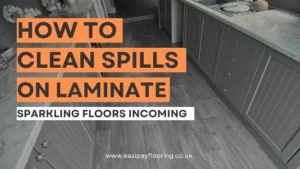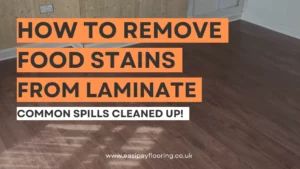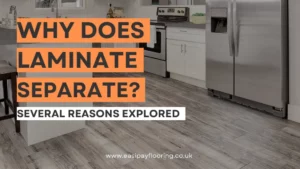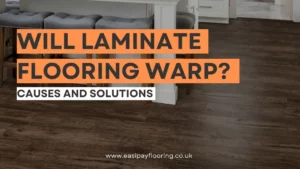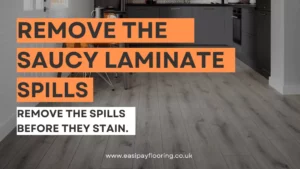
Please Note: We’re currently out of stock of LVT, while we switch supplier, we’ve reduced the cost of SPC flooring to the price of our LVT.

Get In Touch:
03303 332360

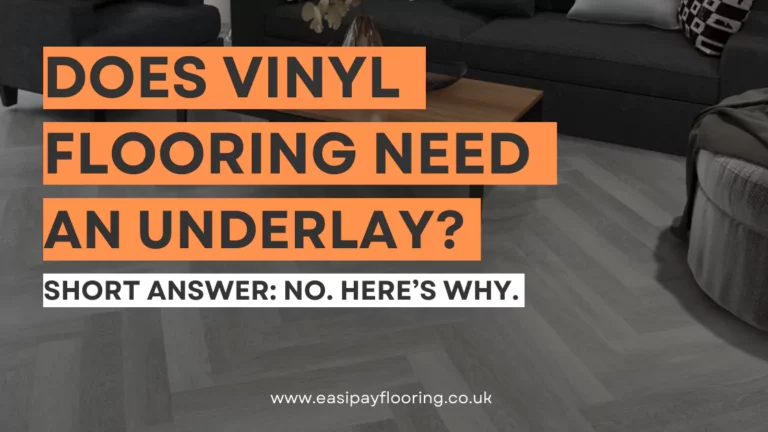
Sheet vinyl flooring is a popular choice for many homeowners due to its cost-effectiveness, durability, and ease of installation. Unlike many other flooring types, sheet vinyl often does not require an underlay.
This blog post explores the reasons behind this characteristic, highlighting the structural and practical benefits of sheet vinyl that eliminate the need for an additional underlay, and providing insights into when you might consider using one despite these norms.
To understand why sheet vinyl flooring generally does not need an underlay, it’s important to know how it’s made and its inherent properties:
Sheet vinyl is manufactured as a single layer of vinyl, which is then printed with designs and covered with a clear wear layer. This production method results in a finished product that is relatively thin but highly durable and resistant to moisture.
Many sheet vinyl products come with a felt or foam backing layer that is integrated during the manufacturing process. This layer provides the cushioning and support that an underlay would normally provide, contributing to the comfort underfoot and noise reduction capabilities of the flooring.
One of the key properties of sheet vinyl is its resistance to moisture. Vinyl is inherently waterproof, and using an underlay, especially one that absorbs moisture, could trap dampness underneath the vinyl, leading to mould or mildew problems. Therefore, the absence of an underlay prevents this risk and maintains the moisture-resistant qualities of the vinyl.
Sheet vinyl is typically glued down directly to the subfloor. This direct bond ensures that the floor is stable and the chances of shifting or bubbling are minimized. Introducing an underlay between the vinyl and the subfloor can interfere with this adhesion, potentially leading to problems with the installation integrity over time.
The smooth and even surface that sheet vinyl provides is ideal for many living spaces, especially areas like kitchens and bathrooms where water resistance is crucial. An underlay could potentially create an uneven surface that might cause the vinyl to wear unevenly or even tear.
Another significant advantage of not requiring an underlay is cost efficiency. By eliminating the need for an additional layer, the overall cost of flooring installation remains lower. This is particularly beneficial for budget-conscious homeowners.
Despite the general recommendation against using an underlay with sheet vinyl, there are situations where it might be beneficial:
If the subfloor has imperfections that cannot be easily corrected, a thin underlay might help to smooth these out. This should be a specific vinyl underlay designed to not compromise the integrity of the sheet vinyl.
In cases where additional insulation or soundproofing is desired, specially designed vinyl underlays can be used to enhance these properties without risking damage to the vinyl flooring.
When installing sheet vinyl over existing flooring that might not be perfectly smooth, a suitable underlay can help to create a more even base for the vinyl.
Sheet vinyl flooring’s design and properties generally eliminate the need for an underlay, making it a straightforward and cost-effective option for many households. However, understanding when the inclusion of an underlay might be advantageous can help ensure that your flooring installation meets all your functional and aesthetic needs, providing the best possible outcome for your home renovation projects.
If you’re still on the hunt for new flooring, why not give us a try? Easipay Flooring offers great prices on high quality flooring, including laminate, vinyl and carpets. We also offer free underlay for carpets and laminate, and to make buying your new flooring more manageable we’ll also let you split the cost into instalments over time too, interest free! Tap the button below to get started.
Sheet vinyl typically does not require an underlay because it often comes with a built-in foam or felt backing that provides the necessary cushioning and support. Additionally, the direct glue-down installation method used with sheet vinyl forms a stable, moisture-resistant layer that adheres well to the subfloor.
Yes, using an underlay can sometimes introduce issues such as reduced adhesion to the subfloor, potential for moisture trapping (leading to mold or mildew), and an uneven flooring surface that may wear out the vinyl prematurely.
If needed, only specific types of underlay designed for use with vinyl flooring should be used. These are usually very thin and made from materials that do not compress easily, to avoid affecting the floor’s stability and flatness.
An underlay might be necessary if the subfloor has significant imperfections that a simple levelling cannot fix, or if additional insulation and soundproofing properties are required.
Not using an underlay saves on installation costs, reduces the complexity of the installation process, and maintains the moisture resistance and stability of the vinyl flooring.
Minor bumps and dips can be corrected using a floor levelling compound. This creates a smooth and even surface that is ideal for the adhesive application required for sheet vinyl.
The best subfloors for sheet vinyl are those that are flat, clean, and smooth. Common examples include concrete, plywood, and well-bonded existing vinyl floors that are in good condition.
Yes, sheet vinyl can be installed over old tile floors, provided the tiles are well-adhered, flat, and the grout lines are not too deep. If the grout lines are pronounced, they should be filled in with a levelling compound to prevent them from showing through the vinyl.
Ensure the concrete is clean, fully cured, and free of moisture issues. Any holes or cracks should be filled with a concrete patching compound, and the entire surface should be leveled if necessary.
The surface should be clean and dry. Apply a suitable vinyl adhesive evenly across the subfloor using a notched trowel. Carefully lay the sheet vinyl down and use a roller to press it into place, ensuring there are no air pockets and that the vinyl is firmly attached to the subfloor.

